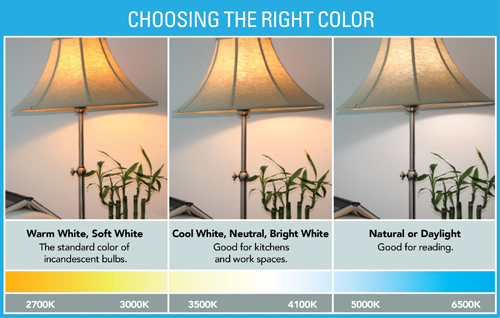
Compact fluorescent lamps (CFLs) have been in the news lately. Columnist George F. Will wrote a recent op-ed piece on CFLs in the Washington Post (April 2, 2009). A week earlier, the New York Times discussed the challenges of using CFLs in an article, Do New Bulbs Save Money If They Don't Work? Depending on who you're talking to, CFLs are either praised or villified.
I have been using CFLs in my home since 2003 and haven't encountered the problems that are highlighted in the Washington Post and New York Times articles. Here's how I use CFLs in my house:

For more information:
I have been using CFLs in my home since 2003 and haven't encountered the problems that are highlighted in the Washington Post and New York Times articles. Here's how I use CFLs in my house:
- CFLs are not meant to be used in areas that are exposed to the elements outside one's house. Neither would they work work in temperatures below freezing. Extreme moisture from the rain and cold weather would significantly degrade the built-in fragile electronic ballast that lights a typical CFL, thereby shortening its lifespan. Hence, I continue to use incadescent lamps outside my house.
- Standard CFLs do not work in dimmers. As I am too frugal to buy the more expensive CFLs that would work with a dimmer, I continue to use incadescent bulbs in fixtures with dimmers.
- I use CFLs in the kitchen, in table lamps and floor lamps in living areas, and in the bathroom. Notwithstanding the advice not to use CFLs in three-way floor lamps, I have not had any problems using CFLs in the three-way floor lamps that I bought from Target.
- I have been using GE CFLs exclusively (no, I don't work for GE). GE CFLs are typically more expensive than store-brand CFLs from Wal-Mart, Home Depot, etc. I buy GE CFLs when they are on sale at Target and using manufacturer coupons to lower the price. I stocked up on GE CFLs when I combined the then $2.00 off manufacturer coupons (no longer available now) with Target's sale on their buy two get one free pack of CFLs a few years ago. I bought enough CFLs then to last for a long, long time.
- The GE CFLs that I have been using last any where from 3 to 4 years. I never had any CFL failing before 3 years. So long as I do not use them in enclosed fixtures (where temperature in the electronic ballast could build up and shorten its lifespan) or in outdoor fixtures (where rain and extreme cold would likewise shorten the ballast's lifespan), I see no reason why CFLs wouldn't last their advertised lifespan.
- I think more could be done to educate people on how to use CFLs. CFLs are not always appropriate for all fixtures and locations. I am not sure whether labelling is the solution, since most folks don't read the fine print.
- As for the color, I haven't had any problems with color. Most complaints about the color stem from a misunderstanding about color temperature of CFLs. Here is how color temperature works. Color temperature is measured in Kelvins (K). The lower the number (2700K), the yellower the color. The higher the number (6000K), the bluer the color.
- Standard incadescent "warm bright" color: 2700K-3000K
- Cool white color: 3500K-4100K
- Standard white fluorescent color: 5000-6500K

- I have CFLs that are 3000K-3500K. At 2500K, they almost replicate the warm bright color of incadescent bulbs. I think the problem lies in the fact that most CFLs do not come labelled with their color temperature. One has to do some sleuthing over the internet.
- As for the question of mercury, I have always recycled my used CFLs. For a while, I recycled my CFLs through my employer, which has a contract to recycle the fluorescent tubes used in the office. Although I haven't had the occasion to do so, I am happy that Ikea, Home Depot and WalMart have drop-off CFL recycling programs. I may take advantage of these opportunities.
For more information:
- Tips for using Compact Flourescent Bulbs (via New York Times)
- Energy Star's CFL Buying Guide




No comments:
Post a Comment